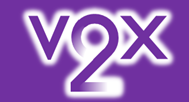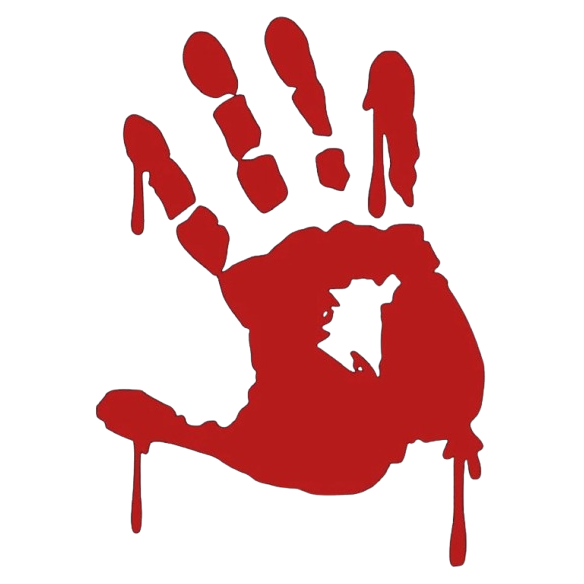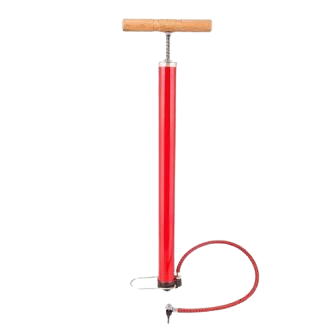-
Posts
3,333 -
Joined
-
Last visited
Recent Profile Visitors
The recent visitors block is disabled and is not being shown to other users.
Dragan's Achievements
-
Opet ovi ekstremno radikalni woke teroristi. Nakon presude protiv Trampa – vila američkog sudije izgorela Samo nekoliko nedelja nakon presude protiv administracije američkog predsednika Donalda Trampa, kuća na plaži savezne sudije Dajane Gudstin je izgorela. Vatra je u ponedeljak potpuno uništila vilu vrednu više miliona dolara u Edisto Biču, Južna Karolina. Prema policiji, sumnja se da je podmetnuta paljevina. ... Požar dolazi samo nekoliko nedelja nakon presude koja je izazvala uzbunu u Vašingtonu: Gudstin je u septembru presudio da država Južna Karolina ne može da deli osetljive podatke birača sa saveznom vladom. Trampovo Ministarstvo pravde zahtevalo je objavljivanje ličnih podataka o više od 3,3 miliona registrovanih birača - uključujući imena, adrese, datume rođenja, brojeve vozačkih dozvola i delove njihovih brojeva socijalnog osiguranja. Gudstin je opravdala svoju presudu tvrdeći da bi deljenje kršilo zakone o privatnosti i povećalo rizik od zloupotrebe političkih podataka.
-
Motaj kablove, gasi internet. Covek sve jasno objasnio.
-
Zamisli da je neko hteo/mogao da u jednom trenutku obezglavi vojno vodjstvo US. Koja idealna prilika. Osim toga idealna prilika za sve strane obavestajne sluzbe da na jednom mestu vide ko je ko u US armiji (nadam se da nisu u nekom javnom chatu objavili spisak ucesnika, adrese familija ...). Nije sve u goloj sili, estetika je isto vazna. Resenje.
-
Inflation and interest rates tracker: see how your country compares
-
Kad sam ladno procitao, svastika - prakticni saveti. 🤣
-
Verovatno ce i dalje nastaviti da pada (sto donekle pomaze US sa dugom, ali stvara druge probleme), jer ce se uskoro pokazati slabost US ekonomije prouzrokovane idiotskom politikom stabilne budale i mozda ce se zaista desiti da polako izgubi svojstvo svetske rezervne valute - na sta ce snazno uticati veliki dug i posledicno tome rast kamata na obveznice. Mnogi beze vec neko vreme u zlato i uskoro ce verovatno preko 4000$. EU bi bila dobro posavetovana da pocne sa izdavanjem vlastitih bondova sto bi privuklo sav kapital koji ce pobeci iz US i omogucilo snaznu potporu ekonomiji (samo jos da se sloze i konacno odbrane Ukrajinu + kurtiraju Orbana I Fica). PS Naravno da nemam kristalnu kuglu i da je tesko dati sigurno predvidjanje, ali kako stvari stoje sve osim kraha od 20-25% u narednih 4-6 meseci bi za mene bilo iznenadjenje.
-
Ovo je stvarno genijalna ekonomija (kako se niko ranije nije toga setio). Prvo najboljem kupcu ogadis proizvod farmera. Onda pokupis pare od nizeg i srednjeg sloja i razdelis onima koje si svojom politikom upropastio. U sustini zasto bi farmeri uopste radili i narednih godina. Umesto sto dzabe pale masine, seju i rade, mogli bi da se dogovore za nadoknadu za sledece godine i da mirno sede kuci. Ko zna mozda bi jos neke branse mogle da se jave za slican postupak (rudari tj. njihovi feudalci ce isto dobiti neku crkavicu). Sve je to naravno jako efikasno i dobro za ekonomiju, ulaganja, zaposlenost, inflaciju ... Zlatno Doba takoreci. No da ne budemo nepravedni, mozda ipak treba sacekati rezultate. US nacionalni dug 20.01.2025. - 36,372,000,000,000 $ 02.10.2025. - 37,555,000,000,000 $
-
Treba imati viziju. Ovi sto traze posao treba da se prijave u rudare. Izgleda da je to buducnost (o ustedama na groznim vetrenjacama i solarnim panelima da i ne govorimo). PS 20 milijadi za Argentinu. 625 miliona za ugalj. ??? za farmere. ??? za golf, balsku salu, vojnu paradu, ravnanje i betoniranje ruzicnjaka ...
-
Sin je rodjen ovde u CH (pre 31 godina). Kod kuce smo pricali srpski, u vrticu svajcarski dijalekat i nemacki. Ovo smo mu pustali sa kaseta - U osnovnoj je, ne secam se vise tacno, 1-2-3 godine isao na dodatne casove u srpsku skolu, tako da dobro govori i cita (latinicu i cirilicu). Jedino kad pise pravi prilicno gresaka (posebno kod jednacenja po suglasnicima; zvucni vs bezvucni). Veoma voli da nauci neke nove reci, koje se redje koriste, tako da ima prilicno sirok fond reci. U osnovnoj je ucio francuski, ali ga nije voleo. Sada kaze da mu je drago da moze da razume osnovne stvari. Na faksu i kasnije na poslu - engleski. Jedino mi je zao sto mu jos nisam dovoljno priblizio nasu poeziju/literaturu i muzicke "klasike" iz 70-80-tih (donekle jesam, ali radi se i o tome da svaka generacija ima svoje "referentne tacke" i da ono sto je mozda meni bilo interesantno/bitno njemu vise nije - klasicna roditeljska potreba da dete dobije iste "korene", od koje sam zapravo odustao sa svojih 18 godina; ipak je lepo da postoje izvesne stvari, posebno u vezi humora, na koje se mozemo pozivati kao na zajednicke - na pr. odgledali smo zajedno seriju "Grlom u jagode" ...). Izmedju sebe pricamo srpski, ali ako neki stranac tu prebacimo na nemacki, ili engleski. Ponekad ima i smesnih scena - jednom smo bili na letovanju u Hrvatskoj, dve Svajcarkinje i jedan Hrvat pricaju na Hrvatskom, Hrvat ode a Svajcarkinje nastave da pricaju na hrvatskom. Nesto slicno se i nama desavalo, posebno ako je neka dublja rasprava onda mi je nebitno koji jezik koristim, vec je koncentracija na misao i znacenje.
-
Za sve one koji su investirali u akcije - oprez. Trenutno postoji velika diskrepanca izmedju Main Street i Wall Street. Za ocekivati je da balon u narednih meseci pukne sto ce posebno pogoditi US, ali po domino efektu i ostale berze. Sklonite pare na sigurno, makar i na konto.
-
Stabilna budala: "A lot of good can come down from shutdowns" “The last thing we want to do is shut it down, but a lot of good can come down from shutdowns. We can get rid of a lot of things that we didn’t want, and they’d be Democrat things -— but they want open borders. They want men playing in women’s sports,” Trump said during an executive order signing. Trump was asked specifically why mass layoffs would be necessary alongside a government shutdown if the Department of Government Efficiency is already reducing the federal workforce. “The Democrats want to shut it down, so when you shut it down, you have to do layoffs,” Trump said, seeming to equate the need to furlough government workers with the administration threatening more layoffs. “We’d be laying off a lot of people that are going to be very affected, and they’re Democrats. They’re gonna be Democrats.”
-
Zar stvarno mislis da je Ursula fon de Lajen pokleknula pred stabilnom budalom ? Ona je, kao odrasla i odgovorna osoba pred mocnom narcistickom bebom (mocnom zbog polozaja, ne zbog licnih osobin), odigrala diplomatsku igru. Carine ce svakako naskoditi Evropi, ali i US mozda jos vise. Otvoreni carinski rat bi bio jos stetniji za sve. Obecanja koja su data za ulaganje u US su samo to, obecanja koja su i drugi dali kupujuci vreme, dok se ceka da stabilna budala napusti pozornicu. Ursula fon de Lajen je politicki i intelektualno toliko iznad stabilne budale da mi je uopste smesna ideja kako je stabilni napravio neki dobar deal - btw osim sto je svima udario carine (koje ce placati US uvoznici), nikakav znacajniji deal nije napravio, naprotiv mnoge je upropastio - izvoz soje u Kinu, prekinuta gradnja velike korejanske fabrike baterija, turizam posebno u odnosu na Kanadjane ... EU ima svojih mana, ali dogovori koje prave sirom sveta (zaobilazeci US) idu u dobrom smeru. Epilog (za sada). Sunovrat US se nastavlja. Hegseth kritizira 'debele generale', kaže da bi američki oficiri trebali dati ostavku ako ne podržavaju njegov program Obraćajući se auditorijumu punom visokih dužnosnika koji su doletjeli iz cijelog svijeta, Hegseth je branio svoja otpuštanja oficiri, uključujući najvišeg američkog generala, koji je crnac, i najvišeg admirala mornarice, koja je žena. Rekao je da su oficiri koje je smijenio bili dio slomljene kulture. ... Nije jasno koliko je događaj koštao. Prošle nedelje, Hegseth je naredio vojnim čelnicima da dolete iz cijelog svijeta na skup, neposredno prije potencijalnog zatvaranja vlade. ... Trump:"Ako ti se ne sviđa što govorim, možeš napustiti sobu. Naravno, gubiš svoj čin, gubiš svoju budućnost." „Rekao sam Peteu da bismo neke od ovih opasnih gradova trebali koristiti kao poligone za obuku naše vojske. Nacionalne garde, ali naše vojske“, rekao je Trump, misleći na Hegsetha. „Amerika je pod invazijom iznutra. Mi smo pod invazijom iznutra, ne razlikuje se od stranog neprijatelja, ali je u mnogočemu teže, jer oni ne nose uniforme“, rekao je Trump. Ovde je ceo govor - Trumpov i Hegsethov govor vojnim vođama









